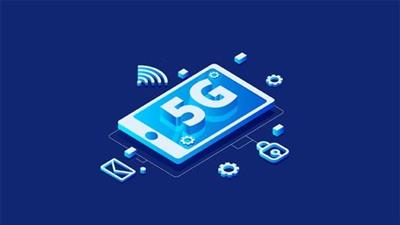
Lte Fundamentals
Posted on 29 Dec 06:50 | by mitsumi | 14 views

Last updated 9/2021
MP4 | Video: h264, 1280x720 | Audio: AAC, 44.1 KHz
Language: English | Size: 1.34 GB | Duration: 2h 18m
LTE Introduction in depth
What you'll learn
This Course is designed for Telecom Professional to have an overview of
Why LTE ?
Key Principles in 4G (LTE), Benefits and Future ahead.
LTE Network Architecture in detail
LTE Air Interface in brief explaining the terminology and Basic Structure of PRB
LTE DL and UL Channels
LTE QCI, EPS Bearer - Dedicated and Default
Requirements
Anyone interested to learn 4G can enroll in this course, However prior knowledge of telecom is recommended.
Description
This LTE Fundamental course trains an individual about the basics and important concepts of LTE Technology. The training will start with the very basics of LTE technology so that any individual can understand the need for a 4G - operator as well as a customer point of view. Then we will talk about the technicalities, key principles (Throughput, Latency, Convergence, TTI, MIMO, Multiple Access, Modulation, and Coding Scheme (MCS), etc). We will also look at the evolution of telecom Generations (G's) from 1G to 4G and the future LTE-A, COMP, HetNet, and others. After covering the basics we willGradually move towards the in-depth discussion about the LTE Network Architecture (EUTRAN and CORE) covering the functionality of EUTRAN, EPC (MME, SAE GW, PCRF, HSS), interfaces, Protocol Stack. we will also cover the Interworking of 4G Architecture with 3G / 2G (legacy 3GPP) and non-3GPP trusted and non trusted networks(WiFi/ WiMAX), also roaming scenarios will be covered.Further discussion will be on LTE QCI, EPS Bearers (Default, Dedicated), LTE Air Interface concepts - OFDMA, SC-FDMA, LTE FDD vs TDD, Frame Format, and Multiple Antenna Techniques (MIMO) covering Spatial multiplexing (SM) and transmit diversity (TM). Finally, we will cover the LTE Uplink and Downlink Channels and LTE Initial Access procedures.
Overview
Section 1: LTE Introduction
Lecture 1 Course Preview
Lecture 2 Overview & Objectives
Lecture 3 User Expectation
Lecture 4 Operator Expectation
Lecture 5 Mobile Broadband Evolution
Lecture 6 Technology Comparison
Lecture 7 3G Vs 4G Technology Comparison
Lecture 8 Requirements of LTE
Lecture 9 LTE Vs UMTS Network Arhitecture
Lecture 10 LTE Network Architecture
Lecture 11 OFDM
Lecture 12 Overview of LTE Air Interface
Lecture 13 Key Features of LTE
Lecture 14 FDD and TDD
Lecture 15 FDD and TDD Bands
Lecture 16 Terminals, Modules and Fixed Wireless Terminals
Lecture 17 LTE UE Categories
Lecture 18 LTE Specification Work - Part 1
Lecture 19 LTE Specification Work - Part 2
Lecture 20 LTE Standard Specification
Section 2: EPS Architecture
Lecture 21 Overview & Objectives
Lecture 22 SAE - Targets
Lecture 23 Architecture Evolution
Lecture 24 EPS Network Architecture
Lecture 25 Functionality of e-NodeB & UE
Lecture 26 Functionality of MME
Lecture 27 Functionality of S-GW
Lecture 28 Functionality of P-GW
Lecture 29 Functionality of PCRF
Lecture 30 Functionality of HSS
Lecture 31 Roaming in Basic System Architecture Configuration
Lecture 32 EPS Roaming Architecture
Lecture 33 EPS Inter-Working With 2G/3G Networks
Lecture 34 3GPP and Non-3GPP Inter-Working
Lecture 35 EPS Inter-Working With Non-3GPP Access Technologies
Lecture 36 EPS Inter-Working With CDMA Networks
Section 3: Traffic & Mobility Management
Lecture 37 Overview & Objectives
Lecture 38 EPS Network Identifiers
Lecture 39 Tracking Area Update Concept
Lecture 40 EPS Mobility Management (EMM) States
Lecture 41 EPS Connection Management (ECM) State
Lecture 42 RRC States in E-UTRAN
Lecture 43 EPS Bearer Service Architecture
Lecture 44 EPS Bearer Services : Default Bearer
Lecture 45 EPS Bearer Services : Dedicated Bearer
Lecture 46 SAE Bearer QoS Awareness
Lecture 47 SAE Bearer QoS Attributes
Lecture 48 QoS Class Identifier (QCI) Characteristic
Lecture 49 LTE / SAE Handover
Lecture 50 LTE / SAE Handover Principles
Lecture 51 Handover Preparation
Lecture 52 Handover Execution
Lecture 53 Handover Completion
Lecture 54 Inter-System Handovers
Lecture 55 Differences in E-UTRAN and UTRAN Mobility
Lecture 56 Policy and Charging Control (PCC)
Lecture 57 Basic Policy and Charging Control (PCC)
Lecture 58 PCC in Roaming with PMIP : Home Routed Model
Lecture 59 PCC in Roaming : Local Breakout Model
Section 4: Air Interface (OFDMA & SCFDMA)
Lecture 60 Overview & Objectives
Lecture 61 Duplexing and Multiple Access
Lecture 62 LTE Multiple Access Background : Single Transmitter
Lecture 63 LTE Multiple Access Background : FDMA Principle
Lecture 64 LTE Multiple Access Background : Multi-Carrier Principle
Lecture 65 OFDM Principle
Lecture 66 OFDM : Nutshell
Lecture 67 OFDM : Frequency - Time Representation
Lecture 68 OFDM and FFT / IFFT
Lecture 69 Motivation for OFDMA in LTE
Lecture 70 Solution to ISI : Cyclic Prefix
Lecture 71 Cyclic Prefix : Normal & Extended
Lecture 72 OFDM Transmitter and Receiver
Lecture 73 OFDM Key Parameters - Part 1
Lecture 74 OFDM Key Parameters - Part 2
Lecture 75 OFDM Key Parameters - Fast Fourier Transform Size (NFFT)
Lecture 76 OFDM Key Parameters for FDD and TDD Modes
Lecture 77 OFDM Key Parameters - Sampling Rate (FS)
Lecture 78 SC - FDMA
Lecture 79 OFDM Vs Sc - FDMA : QPSK Example
Lecture 80 SC - FDMA : Multiplexing
Lecture 81 SC - FDMA : Transmitter and Receiver
Lecture 82 LTE / UTRAN : Bandwidth Distribution
Lecture 83 LTE Resource Grid, Resource Block, Resource Element
Lecture 84 The Usage of Resource Element (RE)
Lecture 85 LTE Duplexing - FDD / TDD
Lecture 86 LTE Frame Structure : Generic
Lecture 87 Radio Frame Type 1 - FDD
Lecture 88 Radio Frame Type 2 - TDD
Lecture 89 Fields in Special Subframe : DwPTS, GP and UpTS
Lecture 90 TDD Radio Frame Configurations (DL/UL)
Lecture 91 Special Subframe Configurations (No. of OFDM Symbols)
Lecture 92 Different Methods for OFDM Multiple Access
Lecture 93 OFDMA Challenges
Section 5: MIMO
Lecture 94 Overview & Objectives
Lecture 95 Aspirations
Lecture 96 Conventional (Single) & New (Multiple) Antenna Configurations
Lecture 97 MIMO System Model (Principle)
Lecture 98 Multiple Antenna Arrangements
Lecture 99 MIMO Design Criterion
Lecture 100 Physical Channel Processing, Example of MIMO Usage & Summary
Beginners in 4G.,Any one who wants to learn about 4g Basics.
rapidgator.net:
https://rapidgator.net/file/fe4860153ddb64be2e57c8ac24e5f0cc/lwbnh.Lte.Fundamentals.part1.rar.html
https://rapidgator.net/file/1c1c09c586ac17d602416858af12c882/lwbnh.Lte.Fundamentals.part2.rar.html
uploadgig.com:
https://uploadgig.com/file/download/cf3516C2f267b467/lwbnh.Lte.Fundamentals.part1.rar
https://uploadgig.com/file/download/d89f37680517B789/lwbnh.Lte.Fundamentals.part2.rar
nitro.download:
https://nitro.download/view/1603B293C10DAA5/lwbnh.Lte.Fundamentals.part1.rar
https://nitro.download/view/E31C78950A0DBD4/lwbnh.Lte.Fundamentals.part2.rar
Related News
System Comment
Information
 Users of Visitor are not allowed to comment this publication.
Users of Visitor are not allowed to comment this publication.
Facebook Comment
Member Area
Top News



